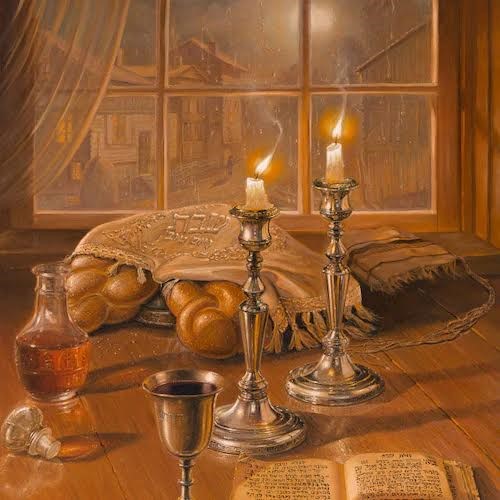Shabbat Vayak-hel Shalom

by Phyllis Chesler
Last year I focused on the difference between a generous heart (“nadiv lev”), mentioned twice, and a “wise heart (“hacham lev”) mentioned five times. Overflowing generosity can lead to both good and evil such as the people “breaking off their ornaments to give to the golden calf” (Leibowitz, citing the Rambam, R. Yehudah Ben Pazi and the Yerushalmi, Shekalim, 1.1). In contrast, a “wise heart” is measured, disciplined, restrained, and endowed by God with specific talents.
However, this year, I am focused on the concept of what is holy, “kadosh.” Is it something in the material realm, such as the mishkan—or rather, is it a moment in time that God commands us to sanctify? According to Reb Jonathan Sacks (z”l), the Sabbath overrides the building of the mishkan. “On a more metaphysical level, the Sanctuary mirrors—is the human counterpart to—the divine creation of the universe. Just as divine creation culminates in the Sabbath, so too does human creation. The sanctity of place takes second place to the holiness of time.”
Leibowitz, citing Abravanel, also asks why do we need to be reminded again about the Sabbath—hasn’t this already been imparted at least three times before— in the Ten Commandments, again in Mishpatim, and most recently in Ki Tisa? Here, Leibowitz cites Rabbi A.J. Heschel who, in his beautiful work “The Sabbath, its Meaning for Modern Man,” writes: “We must not forget that it is not a thing that lends significance to a moment, it is the moment that lends significance to things.” Leibowitz confirms that “Heschel asserts that Judaism is more concerned with time than with space.”
Thus, even building a place, a sanctuary where God’s presence may dwell among us is not as important as stopping all such work to honor the Sabbath. She takes us back to Bereshit (2, 3) where God blessed the seventh day and sanctified it.” The first of many mentions.
A personal note: In honor of our Torah class this week with Reb Benjamin Skydell, I am citing the words of sages who are far, far greater in learning than I am. They are definitely “tall trees.” Hopefully, I am also citing them accurately. For all those who were not in this class—as well as those who shared this learning—please allow me to wish you a Holy Shabbat Shalom.